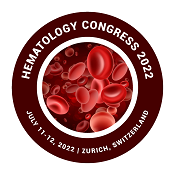
Sergry Donskov
Moscow State University of Medicine and Dentistry, Russia
Title: Distribution of ABO blood groups in ARVI COVID-19 patients
Biography
Biography: Sergry Donskov
Abstract
Introduction. There is evidence of a relationship between acute respiratory viral infection Covid-19 (ARVI Covid-19) with gene complexes encoding the ABO and Lewis group antigens, as well as activators of antiviral restriction enzymes and interferon. According to the observations of Chinese authors, the risk of ARVI Covid-19 in the Chinese is significantly higher among people with blood group A. Similar data were obtained by researchers from England, France, Italy, USA, Iran, India and other countries of Europe, Asia and America.
Purpose of the study. To establish a possible connection between ARVI Covid-19 and blood groups in the Russian Federation and the Republic of Belarus.
Material and methods. We analyzed the distribution of blood groups among 11573 patients with ARVI Covid-19, 5117 donors of anticoid plasma (ACP) and 89737 healthy individuals, residents of Moscow, Smolensk, Yakutsk, Minsk and Gomel. SARS Covid-19 was diagnosed using PCR. The blood group was determined by conventional serological methods. Statistical analysis was performed using the chi-square test.
Results. The frequency of blood groups among patients with ARVI Covid-19 in Moscow differed significantly from the normal distribution of blood groups in this region. Blood groups O and B were less common – 31.47 and 20.72%, compared with the control – 33.71 and 21.85% (p<0.001). Blood group A, on the contrary, was more common – 39.10% with a norm of 35.54% (p<0.001). Among ACP donors in Moscow, there was a decrease in the frequency of blood group O – 30.89%, compared with control – 33.71% (p<0.01). The ratio of blood groups in patients, ACP donors and healthy individuals in Smolensk, Yakutsk, Minsk and Gomel were not statistically significant, possibly due to small samples. At the same time, there was a tendency towards an increase in the frequency of groups A and AB and a decrease in the frequency of groups O and B among patients compared with controls.
Discussion. The data obtained suggest that people in Russia and Belarus with blood groups A and AB are less resistant to infection with the SARS-CoV-2 virus compared to people with O and B blood groups.
Conclusions. The relationship of group-specific polysaccharide A with the development of ARVI Covid-2 is obvious, statistically significant, which motivates the search for additional measures for the prevention of ARVI Covid-19 beyond the established ones and deserves an in-depth study.

